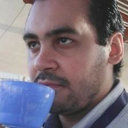Prevalence of sleep disorders among ESRD patients.
Klíčová slova
Abstraktní
Sleep disorders are common among the patients undergoing dialysis in end stage renal disease (ESRD). Although variable, their prevalence has been reported to be higher when compared to the general population. The most frequently reported complaints are insomnia, restless leg syndrome (RLS), sleep-disordered breathing and excessive daytime sleepiness (EDS). The aim of this study was to assess the prevalence of sleep disorders in end stage renal disease patients on regular hemodialysis (group I with 30 patients) and CKD patients (group II with 30 patients) in comparison to 30 normal population (control group). In addition to laboratory investigations which included creatinine clearance using Cockroft and Gault formula, hemoglobin level (Hb), blood urea, serum creatinine, serum albumin, serum calcium and phosphorus and lipid profile, all subjects underwent one night of laboratory-based polysomnography (PSG) consisting of a standard montage of electroencephalography (EEG) (C3/A1 and O2/C3 or O1/C4), monopolar left and right electrooculography (EOG) referenced to the opposite mastoid, surface mentalis electromyography (EMG), respiratory airflow (measured by thermistor) and effort (piezoelectric sensors), electrocardiography (ECG), anterior tibialis EMG and pulse oximetry. For hemodialysis subjects, this study was performed on a night immediately following hemodialysis treatment. The results showed that patients on hemodialysis have sleep disorders, and that sleep disorders are common in group I and II than control group. The percentage of sleep disorders in hemodialysis patients were as follows: insomnia (69%), followed by obstructive sleep apnea syndrome OSAS (24%), RLS and periodic limb movement PLM (18%), nightmares (13%), EDS (12%), sleepwalking (2%), possible rapid eye movement behavior disorders RED (2%), possible narcolepsy (1.4%). While the percentage of sleep disorders in CKD patients were as follows: insomnia (54%), followed by RLS (19%), PLM (12%), OSAS (16%), nightmares (15%), EDS (15%), sleepwalking (4%), possible RBD (3%), possible narcolepsy (1%). There was inverse correlation between sleep disorders and Hb, albumin and creatinine clearance; also there was positive correlation between sleep disorder and phosphorus. We concluded that the sleep disorders are common in CKD patients either on conservative management or on regular hemodialysis. Treatment of anemia, hyperphosphatemia and hypoalbuminemia may improve sleep disorders among those patients.


